“I want to travel India in July and August – where can I go to avoid the monsoon rains?”
Unfortunately for sun seekers, the time when many people have their long summer holidays coincides with the monsoon season in India.
I get many emails from readers wondering what it will be like to travel in India during monsoon, asking if they should come to Goa in July and if there are any places in India without rain.
So I thought it was about time I wrote a blog post about India in monsoon and the best places to visit in July and August to avoid the rains.
I hope this answers some of these frequently asked questions…..
India in Monsoon
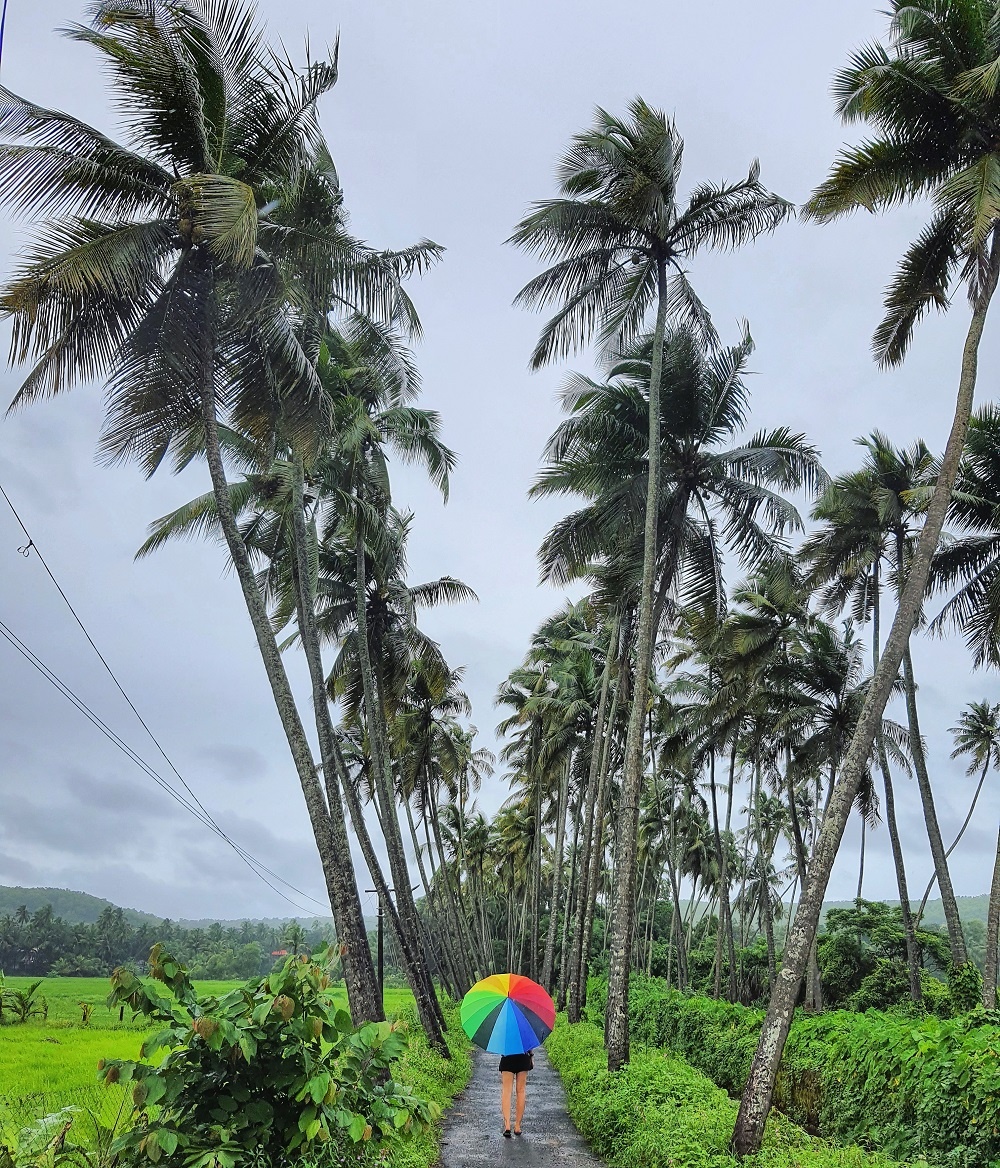
When’s the best time to visit India?
The best time to visit (the majority of) India is in the winter months, between November and March when the weather is sunny, dry and cool (by Indian standards) perfect to enjoy sightseeing.
April and May start to get pretty hot ( a good time to escape up to the hill stations or explore the Himalayan mountains) and in June the monsoon rains starts in South India.
The monsoon usually arrives in Kerala around 1st June and sweeps its way up the country. The rains should hit Goa about a week later, then Mumbai and usually reach Delhi by the start of July.
July and August are the wettest months in India and the monsoon tends to get less heavy the longer it goes on, but of course it differs depending on where you are.
What’s the monsoon in India like?
The arrival of monsoon is a relief and the first thunderstorms are really dramatic. It can be quite fun to watch the locals welcome to start of the monsoon as children run around and everyone dances in the rain because its such a refreshing change from the heat, humidity and dust of summer. Goa even has a really fun festival called Sao Joao at the end of June where the locals jump into wells!
However, unlike the monsoon in Southeast Asia where the rains usually pour heavily for an hour or two in the afternoon or overnight and needn’t disrupt your sightseeing plans too much, the monsoon in India is heavier and unpredictable.
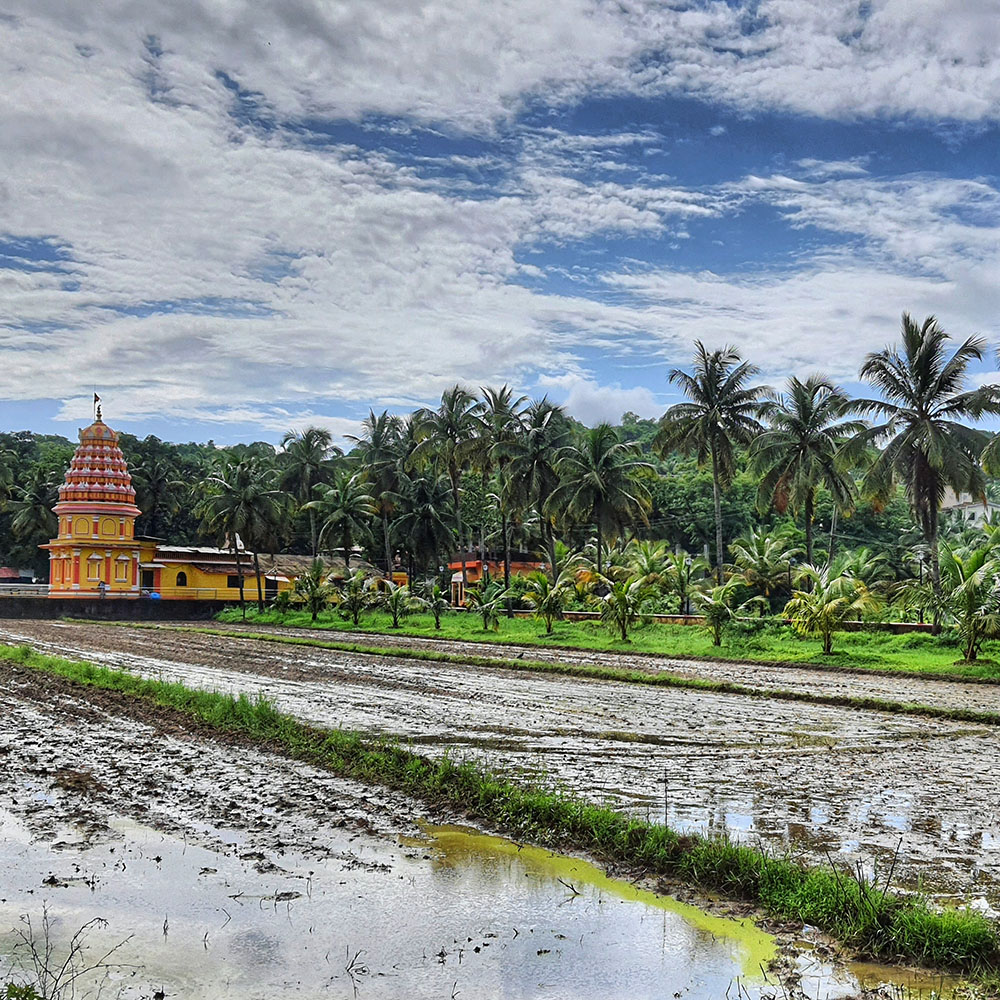
It can rain for days without stopping, especially at the start of monsoon, which can cause dangerous flash flooding and the thunderstorms mean long power cuts which can disrupt your travel and sight seeing plans but still, it doesn’t rain non stop for 3 months and when the sun comes out it’s so beautiful, fresh and green.
July and August are the rainiest months in India but it’s a huge and diverse country and not everywhere receives the same amount of rain. The West Coast (Kerala, Goa and Mumbai (Bombay) and Kolkata (Calcutta) West Bengal and the North East see the most rain but other places see less.
Tamil Nadu, on the east side of India, gets most of it’s rain later in the year while some places in India, like Ladakh, don’t receive the monsoon rains because of the high altitude. Also, the desert state of Rajasthan doesn’t get so much rain and contains some of the India’s top sights – so don’t worry if you want to avoid the rains there’s still some great places you can visit in India during monsoon!
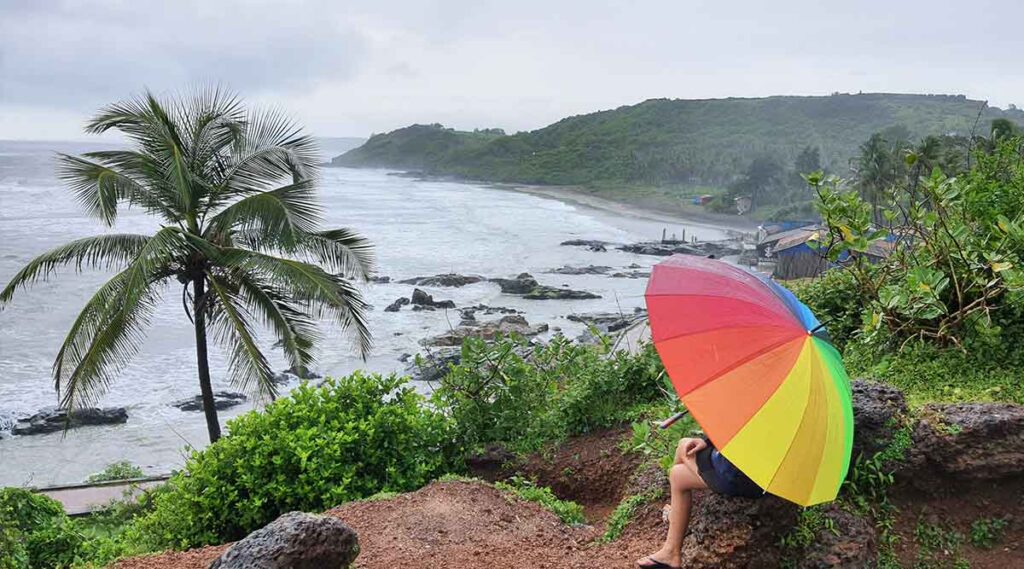
Is it worth traveling in India during the monsoon?
While monsoon may put a lot of people off traveling to India there are advantages to traveling during the monsoon in India, for example:
- It’s off peak season so attractions are less crowded
- Prices are lower so you get better deals on hotels
- The rains are an important respite from the summer heat and wash the dust away leaving the countryside gorgeously fresh, lush, glistening and green.
Some people would say monsoon is one of the most beautiful times to visit Goa or travel India as it’s green and fresh not dusty and hot, however monsoon travel in India is not without it’s challenges and heavy rain can cause disruption.
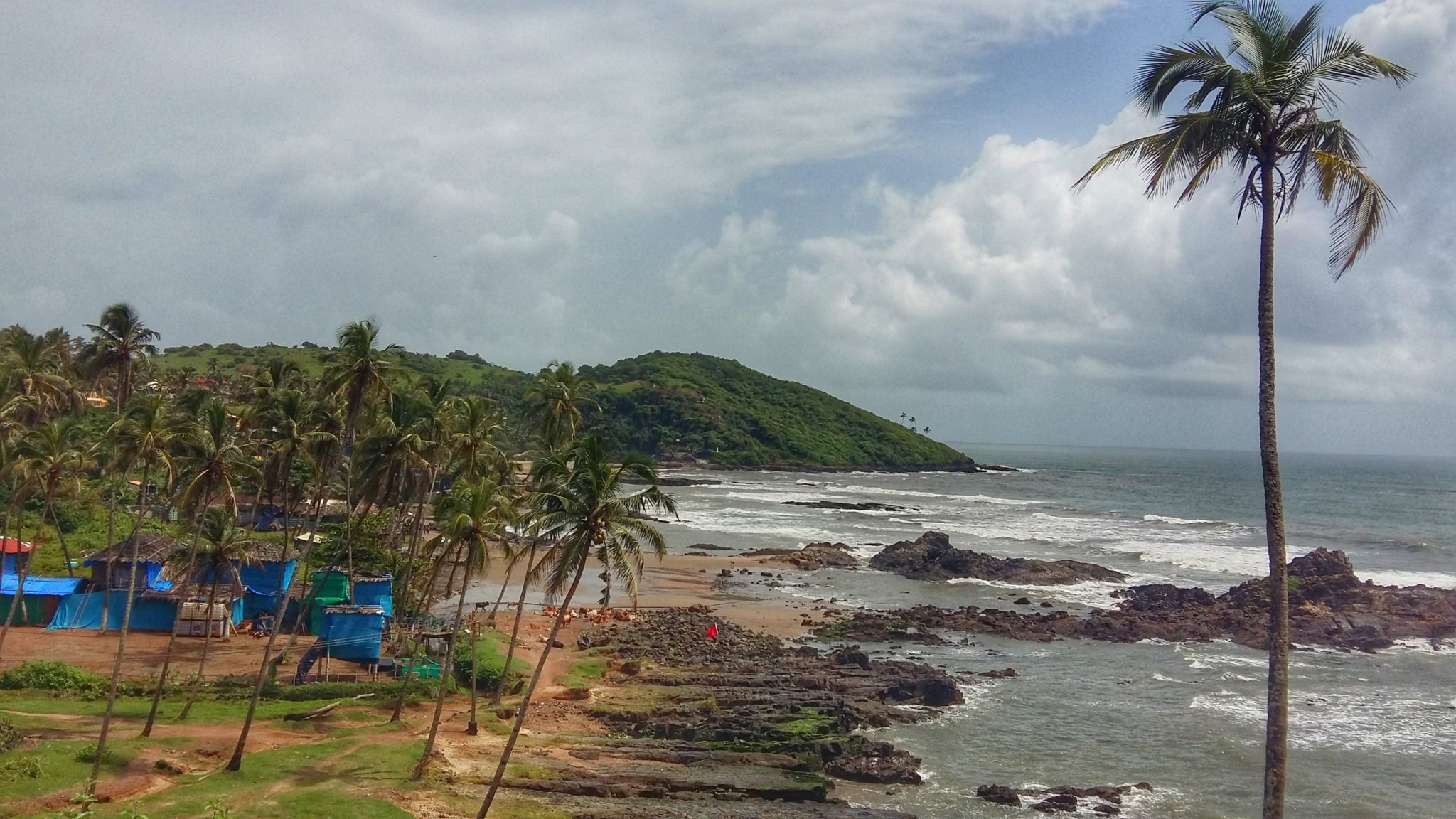
Whilst some people, including the locals, really enjoy the rainy season (if that’s you check out the best destinations to visit during monsoon in India) , in my honest opinion I don’t think monsoon is the best time to travel around India – perhaps this is just because I’m British and I see so much rain that I really don’t want to fly half way around the world for more rain and for it to potentially disrupt my travel plans.
But as I live in Goa I’ve experienced the rains a few times now. There are pros and cons to visiting Goa during the monsoon – come if you like it quiet, luscious and green but be aware that most of the beach shacks, markets and parties are not open during the rainy season.
Plus, the sea can be too rough for swimming and there are a lot of long power cuts so stay somewhere with power back up – luckily the 5 star resorts in Goa often have discounted monsoon deals! Check out my ultimate guide to visiting Goa in the rainy season for more information.
But there’s so much to India than just Goa! And luckily there are still some amazing places that are really worth visiting, even in monsoon.
Where are the best places to visit in India in July and August to avoid the monsoon rains?
There are a lot of beautiful places to visit in India to celebrate the coming of the rains, but if don’t like the rain – here’s some ideas for where can you go to avoid the worst of the monsoon.
Ladakh
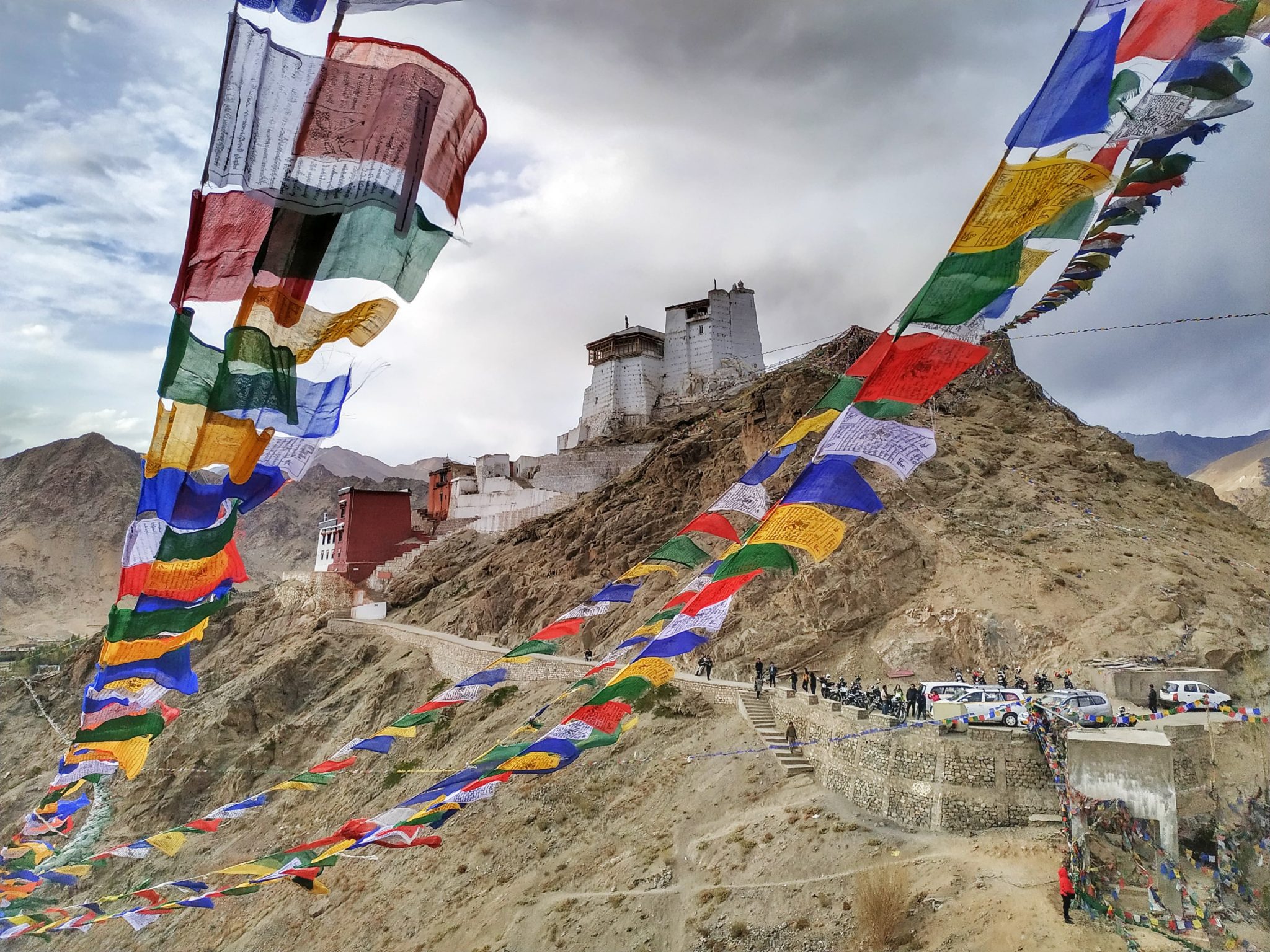
July and August are the perfect time to travel to the surreal and beautiful region of Leh and Ladakh. It’s a remote and out of this world place up in the Tibetan plateau of the Himalayas with an alpine desert, dry barren landscape and interesting, historic Buddhist monasteries.
Ladakh feels like a world away from the rest of the country and is one of the only places in India in July and August without rain. Ladakh has a very short tourist season as it’s only accessible by road from late June till early October and the absolute best time to travel to Ladakh is July and August.
Epic motorbike trips over the mountains are a popular way to reach Ladakh, but you can also fly into Leh airport. Lovely Leh is an interesting and unique city with prayer flags, palaces and monasteries surrounded by snowy peaks. It makes a great gateway to the region.
After acclimatization, explore more of Ladakh’s unique landscapes at places like Nubra Valley and Pangong Lake. Public transport is scare in this remote high altitude area so a multi day tour with a private 4WD car and driver are the best way to get around and make the most of your time in this unforgettable place.
Ladakh escapes the monsoon rains entirely but you won’t be the only one there – this is peak season and it can get pretty crowded but its a unique place to visit and well worth it! Spiti Valley in Himachal Pradesh also offers a similar high-altitude desert landscape but with fewer visitors.
Check out My Ladakh Itinerary and Travel Tips and my pick of the best places to stay in Leh.
Read More: The Perfect North India Mountains and Himalayas Itinerary
Rajasthan
The desert state of Rajasthan with it’s rich heritage, flamboyant palaces and imposing forts doesn’t see as much rain as some areas of India. It’s also home to some of India’s most iconic sites and is one of the best places to visit in India in July and August.
Traveling to popular places like Jaipur, the Pink City, Jodhpur, the Blue city, and the romantic lakeside city of Udaipur in monsoon time is an opportunity to see some of India’s most enchanting sights without the crowds and stay at some fine heritage properties, or even amazing palace hotels, for less.
If you’re up for more adventure try your luck spotting a tiger at Ranthambore National Park or venture further into the Thar desert to explore the magical Jaisalmer fort, also known as the Golden City,. You can also take a camel safari and sleep under the stars in the Thar desert for a unique and unforgettable experience.
You can also easily combine a trip to Agra to see the Taj Mahal with visiting Rajasthan. You can visit three of India’s most famous destinations – New Delhi, Agra and Jaipur, in just 3 days with this private Golden Triangle Tour. This is a great option if you’re short of time but still want to pack a lot in without the hassle of arranging your own transport, guides and hotels. If you have more time you could easily spend 2 weeks in Rajasthan and discover something new everyday!
Tamil Nadu

While the rains are lashing the West coast destinations like Kerala and Goa, on the South East coast, Tamil Nadu, a state of interesting ancient temples and culture, amazing food, hill stations and beaches.
Tamil Nadu has so much to offer yet it’s quite underrated and doesn’t receive so many tourists, plus it sees less rainfall in July and August as it gets most of its rain from the northeast monsoon in October to December.
The state capital, Chennai (Madras) is an interesting mix of old and new. A few hours down the coast is Mahabalipuram, a quirky beach town home to UNESCO listed ancient temples. Don’t miss Puducherry (Pondicherry) a former French colony, and nearby Auroville – a futuristic utopian international community.
Then there’s Madurai, a center of Tamil culture of over 4,000 years where you’ll find the impressive Meenakshi temple, the hill station of Ooty and Kanyakumari – the very southern tip of India. In fact there’s too many to mention here – check out this post with more places to visit in Tamil Nadu!
Also Consider
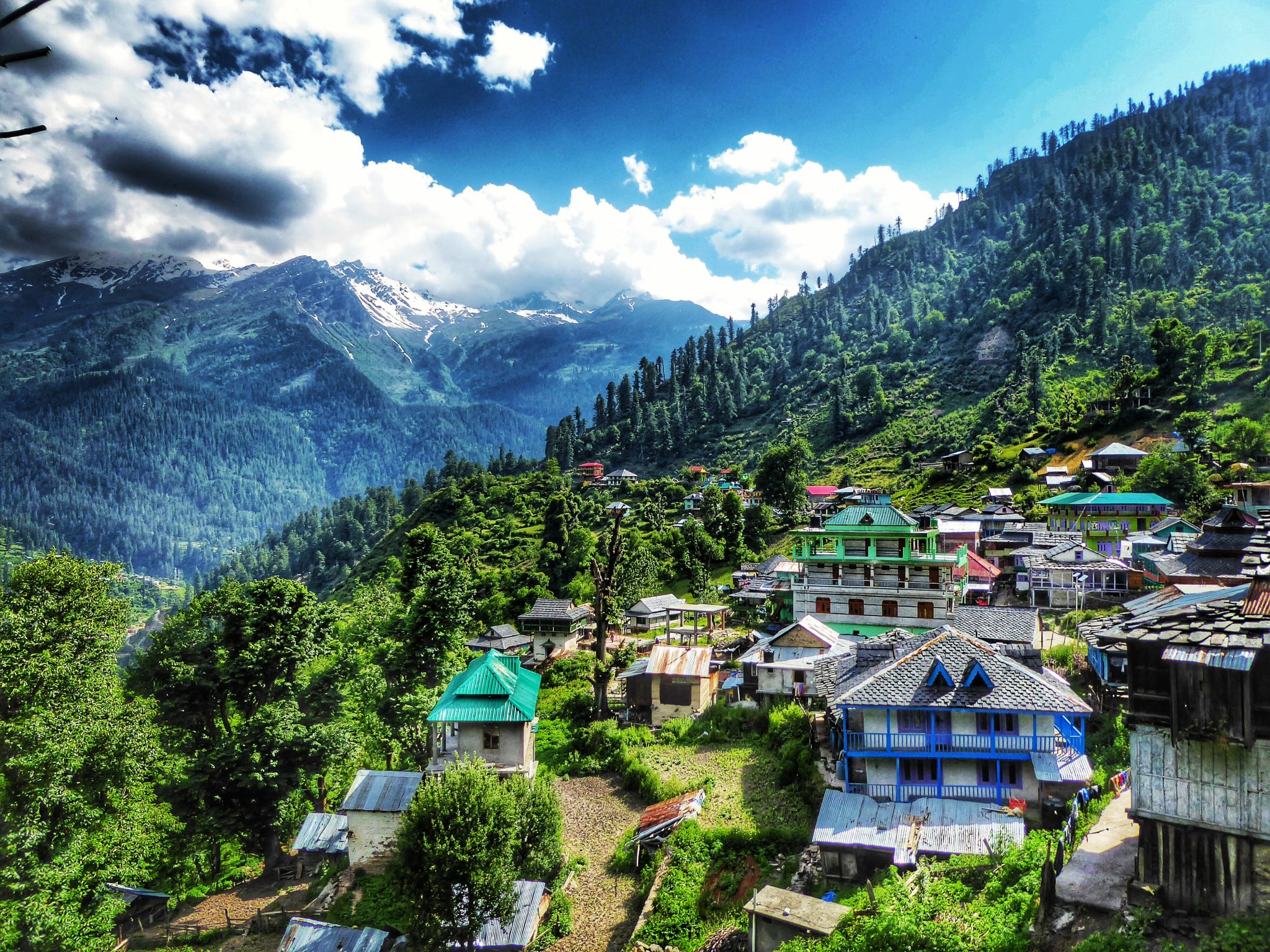
If you’re traveling to India in late June or early July then you could head up into the mountains of Himachal Pradesh and visit Dharamshala, Manali, Parvati Valley, Shimla – these mountain destinations receive the monsoon last and are a great escape from the heat.
However, half of India will also be heading to the mountains and popular hill stations can get crowded so make sure you book your accommodation in advance. Kashmir is so beautiful it’s often called ‘paradise on earth’ – but check the current safety and political situation there before you go.
The Deccan Plateau on the eastern side of the Western Ghats mountain range also sees less rain and is home to interesting sights like the Ellora and Ajantha Caves, the cities of Hyderabad and Bangalore, magical Hampi, plus some more off beat historical places also in Karnataka like Badami, Bidar and Bijapur.

The Valley of Flowers, in Uttarakhand is a stunning high-altitude Himalayan valley that most of the year is covered in snow but has over 300 different varieties of flowers that comes alive with the monsoon rain in a spectacular show of colour. It’ll be rainy but it will be worth it!
Another popular monsoon getaway is Kerala – the lush, green, backwaters, jungles and tea plantations are at their best during the rain and it’s a popular time to take healing yoga and ayurvedic retreats.
Just don’t go to the North East India and the eastern Himalaya region, around Sikkim and Meghalaya if you want to avoid the rain as these are some of the wettest places, not just India, but in the world!
So there’s my suggestions for the best places to travel in India in July and August to avoid the monsoon rains! Hope it helps!
Read More:
- The ultimate guide to visiting Goa in the rainy season
- The pros and cons of visiting Goa in monsoon
- Tips for traveling in India during the monsoon season
- FAQ – Should I come to Goa during monsoon – Hippie in Heels
- 9 Reasons to visit India in monsoon – CNN Travel
- Best places to visit in India during monsoon
Have you travelled to India during the rainy season? Do you have any more suggestions for the best places to travel in India in July and August to avoid the monsoon? Leave a comment below and help out other travellers 🙂
Like this post? Pin Me! 🙂

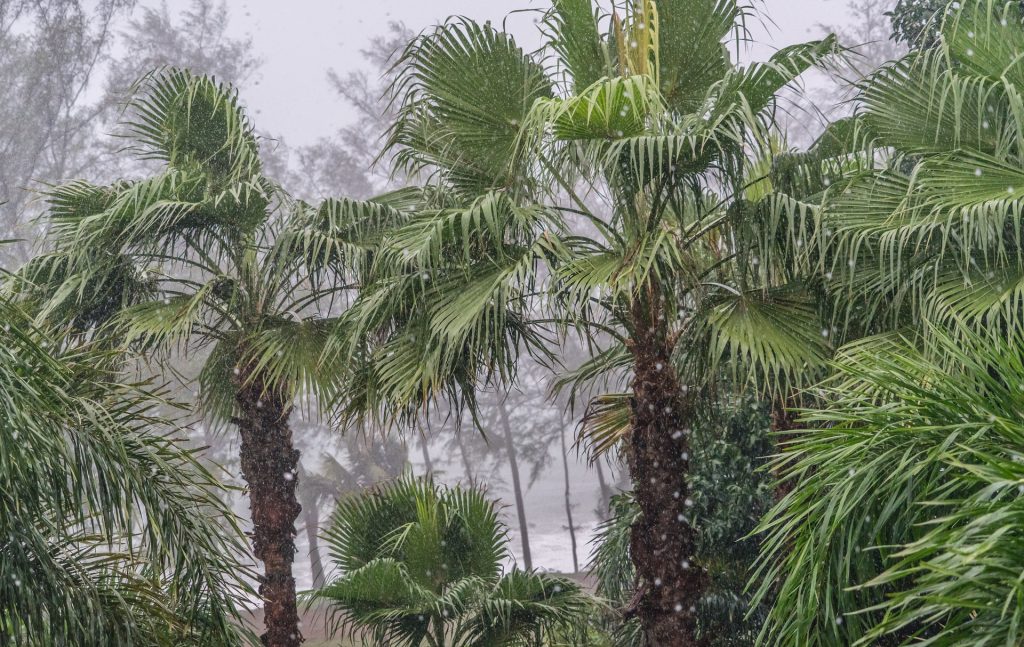
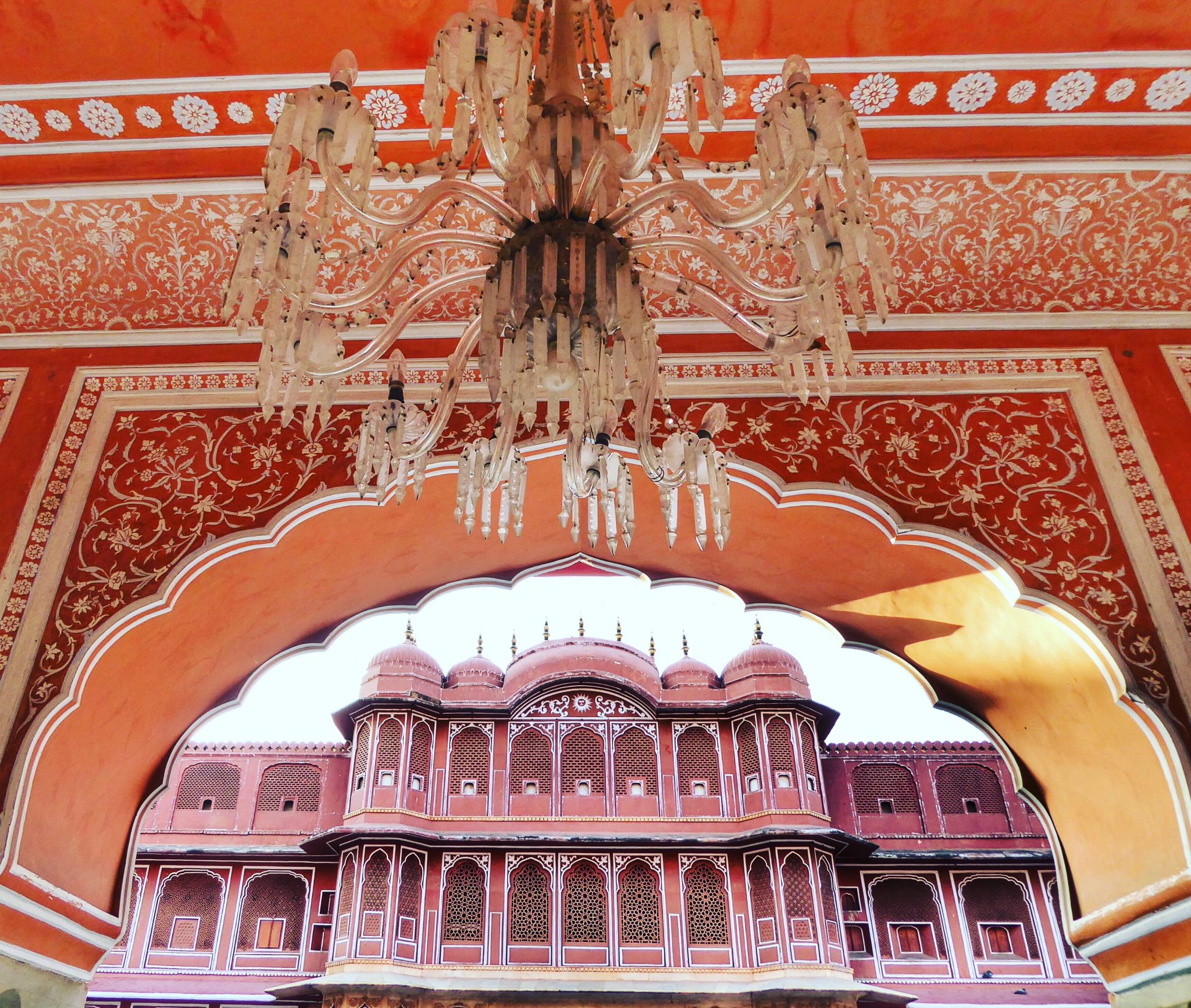

19 comments
Hi Anna, I too travelled to Goa early in the summer, seeing this post, I wish i could have stayed though the monsoon’s and travelled to the other states you mentioned. I fell in love with the beaches, the white side, its clean shores, its nightlife
Hi Sam, Glad to hear that you liked Goa and I liked your video of the beaches in Goa 🙂 Nice work
I want to travel June 2018. Taj Mahal to start. Temple and beach. Got any advice on this monsoon season? Would like to avoid the rain. Thanx!!!
Well it is monsoon time but the monsoon hits Kerala, South Imdia 1st June and moves upwards to hit Delhi around the 1st July so if you go early june to Agra for the Taj Mahal you should avoid the rain but it will be very hot. For beaches try Tamil Nadu the monsoon there comes later and Mahabalipuram (about an hour south of Chennai) has great anicent temples and a beach all in one nice little town. Hope this helps!
Hi Anna! I love your articles. I’ve been preparing for my first trip to India! I’m planning on visiting Coimbatore, Tamil Nadu in order to get ayurvedic treatment for about a month. Before I go there though I’ll have a little time. I’m wondering if you can tell me more about the beaches you recommend, or anything else in that area? I am likely flying into Kochi mid june and leaving late July. Thank you!!
Hey sorry Emily I haven’t been to Coimbatore yet so don’t have any tips for there. Its far from the beaches – I think the closest ones are in Kerala or Kozhikode. check out my post about Kerala – http://www.global-gallivanting.com/a-flashpackers-travel-guide-to-kerala/
As always very useful accurate info about India !
Thanks! It’s my aim to provide useful info 🙂
?? america ? you can’t avoid monsoon in india
fyi monsoon conditions have already hit Dharamsala this year…it is not yet official but if you look out the window you;d never believe that
You have done a pretty good job. Your article is amazing, thanks for providing so much useful information in your article. Good Work!!!
These are amazing places to travel during rainy season.
Hi Anna, I love this article, very helpful. I’ll travel to India in the second half of August and I’m planning to go to Kerala. Is it a totally bad idea or can be worth the trip? Thank you, Arianna
It depends if you like rain or not. Cruising the backwaters in a house boat in the monsoon rain storm can be very atmospheric and dramatic but the rain can hamper other travel plans
Thank you!
Hi Anna, I was hoping to visit Delhi and Agra in late August/ early September, would you advise against this or do you think it would be ok?
Hi Jonathon. It’s not the best time to go – be prepared for some rain but the worst of the rains should be done by then.
Hiii Anna i am preparing a trip for kerala in month of July is it good idea or not? Please telll me
If you like rain it’s a good idea to visit Kerala in July – if you don’t like rain then no